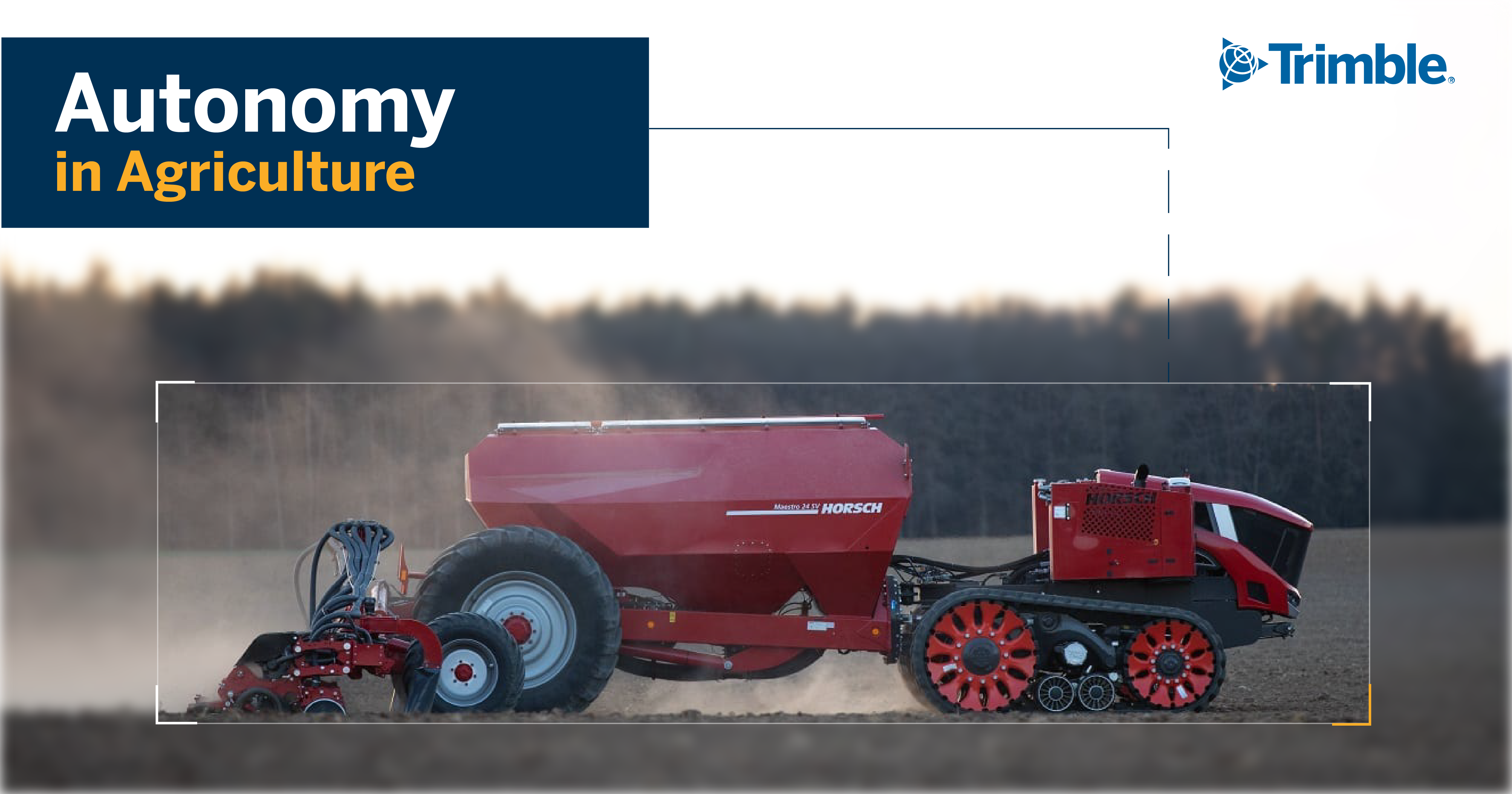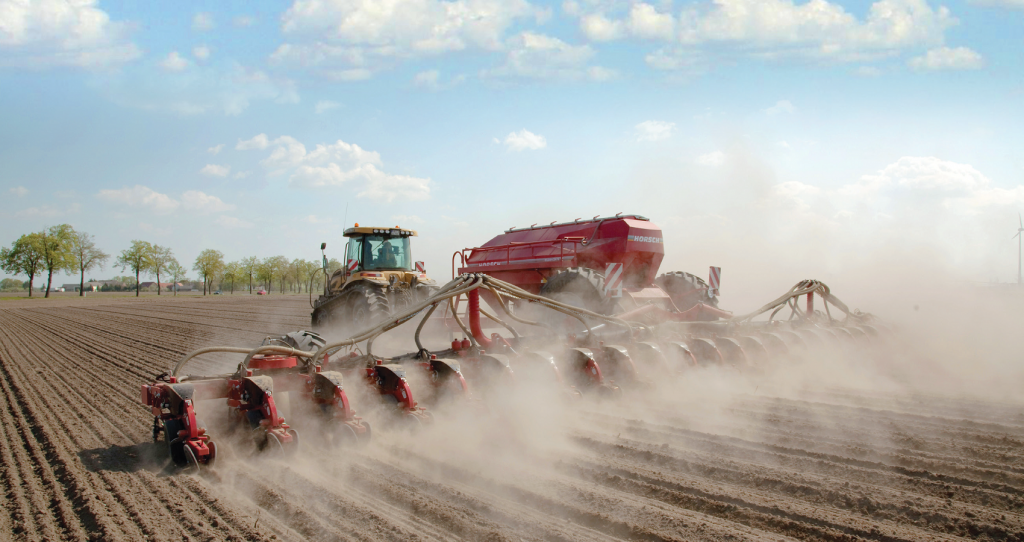Autonomy in Agriculture | How autonomous solutions work in precision ag
August 9, 2021

How autonomous solutions support farmers in precision ag
Agriculture is the driving factor behind countless industries. It generates over 2 trillion in revenue worldwide. However, farming requires constant oversight of crops, soil nutrients, and more. Thankfully, there are more efficient options to maintain farms than manual labor, especially for larger operations.
Autonomous agriculture is changing the way we farm. Farming operations are seeing healthier crops and getting more of a return on harvests.
Autonomous Agriculture
Autonomous agriculture is a facet of the larger precision agriculture movement. Precision agriculture is the practice of using fine-tuned calibrations and technology to make farming more efficient. Autonomous agriculture allows farming equipment such as tractors to operate without a human driver. Technology such as the Trimble BX992 and similar equipment allow for remote control use and monitoring of farm equipment. More and more farming operations are using autonomous agriculture technology to gain an edge in the global market.
Autonomous Agriculture Equipment
Autonomous farming utilizes advanced technology. For maximum efficiency, several systems will need to be installed and work in tandem. These systems include the following:
Soil Sensors: Sensors installed on the farm will monitor soil and crop health. Sensors can also be used to monitor changes in weather and adjust water and nutrient schedules and amounts accordingly. These sensors will report any change in real-time to the farmer via their workstations or cell phones. The most significant benefit of sensors is the ability to monitor crops from a distance.
Autonomous Tractors: Much like sensors, autonomous tractors allow a farmer to move freely while maintaining seeding, soil, and crops. An autonomous tractor will spread fertilizer and seeds to the areas that need them most based on sensor data or farmer input.
GNSS: Global Navigation Satellite Systems are essential to most forms of autonomous agriculture. A GNSS monitors the location and driving patterns of farming equipment and keeps an eye on poorer-performing crops. Once you have the equipment, gaining access to a GNSS is as simple as connecting Bluetooth.
The Future is Now – Check out this agricultural robot named Annie! It uses Trimble’s autonomous navigation capabilities and Corteva’s innovative approach to helping farmers overcome agriculture’s most pressing challenges.

How Autonomous Machinery Benefits Farmers
Traditional farming methods are quickly being outpaced by precision agriculture. Here’s why:
Time and Energy: Autonomous farming equipment works 24/7 with little oversight. That means farmers have more time to focus on other tasks than watering, seeding, soil testing, etc. Autonomous machinery also lowers the risk of personal injury from overworking, heat exhaustion and saves your body the wear and tear of excessive repetitive movement.
Farming is hard enough. The sheer amount of physical labor adds up. And of all the benefits of autonomous agriculture, the ability to rest a little longer and spend more time with the family shouldn’t be overlooked.
Greater Savings: Autonomous agriculture equipment constantly monitors all aspects of crops and resources. This means that fewer resources will be used on thriving crops which lowers operation costs over time. Plus, yields will be healthier and harvested more efficiently, allowing for more harvests to be sold.
Accurate and Detailed Data: Every farmer understands the importance of knowing every square inch of their land. Agricultural sensors relay information about soil, crop health, temperature, light positions, and air quality. Essentially, anything you’d want to know about your crops is readily available from the palm of your hand. It provides a little peace of mind should you ever take that vacation.
The data gained can also help farmers plan out which crops to plant the following year and where. And with the lowered risk of human error in crop analysis, farmers may be able to prevent overextension on resources and finances.
How does Trimble Agriculture contribute to autonomy?
For over 20 years, Trimble Ag has led the way for autonomous technology in agriculture, mining, and construction. Recently, we’ve partnered with HORSCH to make autonomous tractors and other equipment more accessible. Our goal is to ensure the technology keeps up with the growing agricultural market while also offering sustainability to large farming operations. For example, Trimble agriculture technology can be integrated into most pre-existing farm equipment. You won’t need to purchase new vehicles when instead you can upgrade the ones you have.
We provide farmer-focused solutions and ways to fuse digital technology with real-world applications. As autonomous agriculture becomes increasingly mainstream, we plan to provide solutions and establish access for the customers that need it most.
To learn more about Easier Farming with Precision and Trimble Ag equipment, connect with your local reseller today.
Tags: Agricultural autonomy, agricultural robotics, autonomous machines, autonomous solutions, autonomy, Boston Dynamics, Corteva, farm data, GNSS, HORSCH, robodog, soil sensors
